Although the Tour de France is 21 days of racing, as a rider, it might as well feel like a lifetime.
We are now three days into the tour, but we have already spent almost a week on the road. Fortunately for us, morale is high on the team bus, and the boys are moving well. We have first-time tour rider Joe Blackmore, my roommate—and a guy who is 17 years my junior—sitting second in the young riders classification, and our sprint train is meshing well.
I have managed to stay safe thus far, but having sat at the back for the entire race, I have witnessed a lot of crashes I know this is a topic I seem to be covering a lot, but when the green jersey crashes out of the race, and you see what I have seen the past few days, it is hard to push out of your mind.
At our team presentation, just before the grand départ, ASO brought all the riders into the Lille Opera House for their annual pre-race briefing. As always, they kicked the meeting off with a video of the highlights from the previous year’s race.
Stage wins, epic scenery, and of course crashes were the main features of the film. No matter what ASO says, they love crashes. Despite their claimed “attempts” to make the sport safer, one gets a sense – when watching any highlight reel they create – that blood, broken bikes, and some poor bastard walking into an ambulance are what they love to sell.
Any bike race is chaotic but when it comes to @LeTour, it’s another level. Today was a prime example of that.
It didn’t go our way today but we’re just three stages down which means plenty of opportunities to come. As always, the boys are showing good legs and great teamwork.… pic.twitter.com/DQ7wbwzWNa
— Israel – Premier Tech (@IsraelPremTech) July 7, 2025
What struck me most during this presentation, though, wasn’t the graphic images of riders hitting the deck, but what was said to us at the tail end of it. One of the heads of ASO spoke about recent efforts to make the sport safer, but, in his closing remarks, he laid a lot of blame on the riders.
Paraphrasing—while I was listening to the presentation in French – he said something along the lines of: “Riders must also take greater measures to reduce risks, and if they don’t, they may have to be forced to wear protective equipment in the future.”
He said this as if wearing protective equipment would be punitive. To me, this showed a significant misunderstanding of what riders want and how sports, and life in general, work.
Everything in this world has evolved in the pursuit of survival, with the purpose of exploiting the environment and pushing up against limits. Sport, since it is created by us – animals – is just another manifestation of this.
When you draw a line in sports, athletes will inevitably push up against it, and sometimes cross it, in their attempt to win, especially when money and stakes are high. It is up to the organizers of sport to set those lines and to adapt them based on where they want the sport to go. Under the current set of rules and the current speed at which the peloton is traveling, riders must take enormous risks to succeed.
ASO telling riders “you need to take less risk” is like the NBA telling Steph Curry, “you need to shoot fewer threes.” It does nothing. If the NBA wanted fewer three-pointers in a game, they would change the lines.
If ASO and the UCI truly want to make the sport safer, they will have to do the same.
A four-point plan for Tour de France Safety
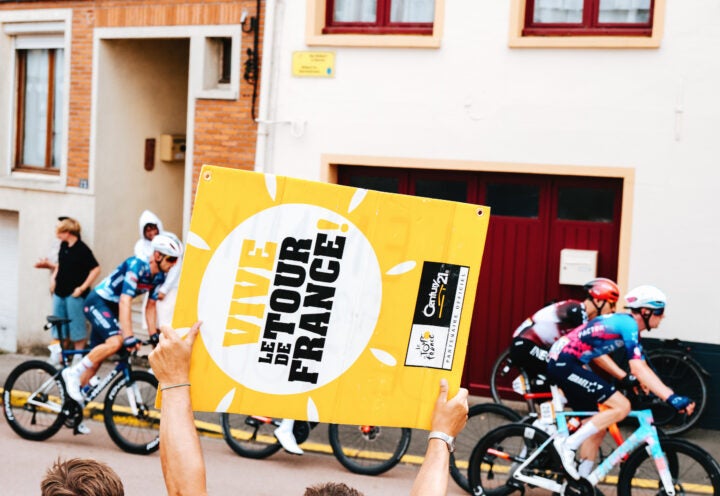
Both the UCI and ASO have taken measures toward this, and I am optimistic that SafeR is making progress. However, nothing dramatic enough has been done yet to significantly decrease risks and crashes. Furthermore, warning us that we will be punished by having to wear safety equipment is absurd.
It’s crazy because we don’t already wear safety equipment. If you dropped anyone outside the pro peloton into this Tour field during any of the first three stages, they would think, “Why the hell am I not wearing hockey equipment right now?”
Just look at the elbows, knees, hips, and hands of every rider in this peloton—it’s clear that it’s foolish that the governing body of this sport has not already forced us to wear protective gear.
There are many ideas on how to make the peloton safer, but I believe four key approaches are: lowering speed, decreasing peloton size, reducing distraction, and rethinking the relegation system. To those who are not very interested in the technical aspects of racing, I suggest stopping here. But for all you bike nerds, please read on:
1: Lower speed
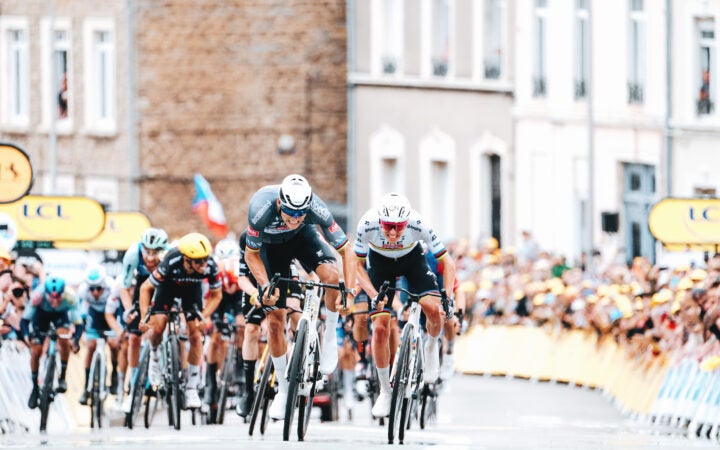
Whenever I race in the bunch on a rainy day, despite the roads being slippery, I often feel safer. Since most riders wear rain jackets, the peloton’s speed is dramatically reduced. Things come at you more slowly, the consequences of falling are less severe, and you are penalized less for not being directly on the wheel of the rider in front.
Therefore, in this age of optimized aerodynamics, I think setting limits on wheel depth, perhaps increasing rolling resistance in tires, and restricting bike and equipment design could help improve safety.
Another measure would be to eliminate motos.
With the advent of drones, I believe ASO and the UCI need to rethink how they cover our sport. Drones are much more environmentally friendly than having four helicopters in the air and a ton of motos on the road. Also, they don’t create a huge draft, like the motos. More often than not, I find myself in a single line in a peloton, chewing my bars at 60 km/h only to look up and see the first rider right on the wheel of a camera bike. This would be far harder to do with a drone.
2: Reduce the size of the peloton
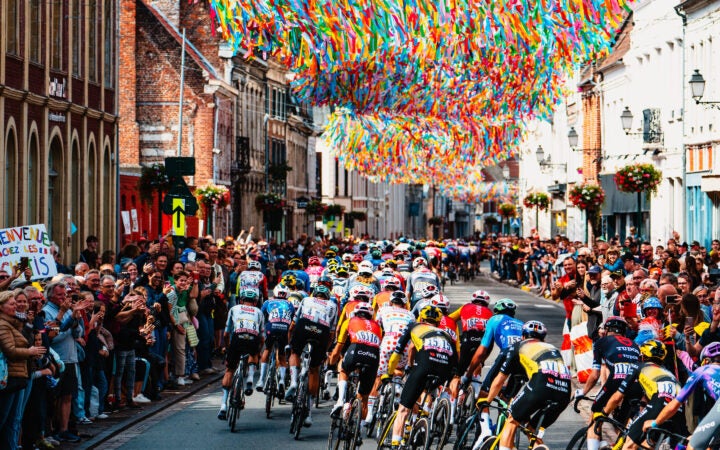
Peloton size is also another area where safety can be increased.
The safest race I felt I participated in last season was at the Olympic Games. I don’t think it was a coincidence that the field was only 90-some riders. When you put 184 riders in a race and have directors screaming in their ears to all be at the front on a road that is one car wide, disaster is almost inevitable.
The original Tour de France didn’t have 8-rider teams, so how did we get to this point where that has become normal? I say, reduce the teams to 6 riders per team, with a maximum of 20 teams (all World Tour teams—no Pro Conti; I’ll get to this in my next point) in the peloton. People want to see the stars of the sport shine.
Does putting 64 extra riders in the mix, who could potentially get in the way of, or crash in front of, these stars, impact the narrative positively? The answer is no.
3: Rethink the relegation system
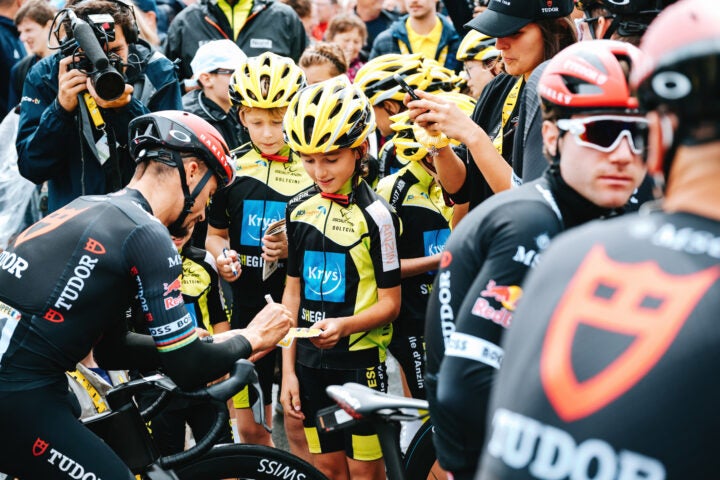
I am a firm believer that the relegation system is an ill-conceived, poorly thought-out, and all-around terrible idea. On the failings of the relegation system, I could probably write a book; however, today I’ll focus on why it impacts safety.
The current iteration of the relegation system, in my mind, is one of the biggest culprits in increasing crashes in the peloton.
I am confident there were far fewer crashes before the relegation system was introduced. In that era, riders really stopped competing once a victory or a top-10 was out of reach. Riders wouldn’t take risks to finish 20th in a race; however, every team in the bottom 10 of the WorldTour now looks at races and thinks, “How can we maximize points?” Riders are no longer told to sit up once their work is done, and this makes for a much more compact bunch, under higher pressure, and more liable to take risks.
Finally, if you were to simply have 20 WorldTour teams – give owners more stake in the sport, with no wild cards, and no threat of relegation – the WT would also be far safer. It’s very strange to me that a team like the Binghamton Senators could be allowed to play against the Florida Panthers. In all other pro sports, you don’t mix levels to the extent that we do in cycling.
When you allow lower-level teams into the biggest races in the world, you create a greater disparity in ability. In doing so, in a sport where the draft is so beneficial, you increase the opportunity for chaos. If riders raced more regularly against each other, they would be more familiar with each other and better understand which wheels are safer to follow.
4: Reduce distraction
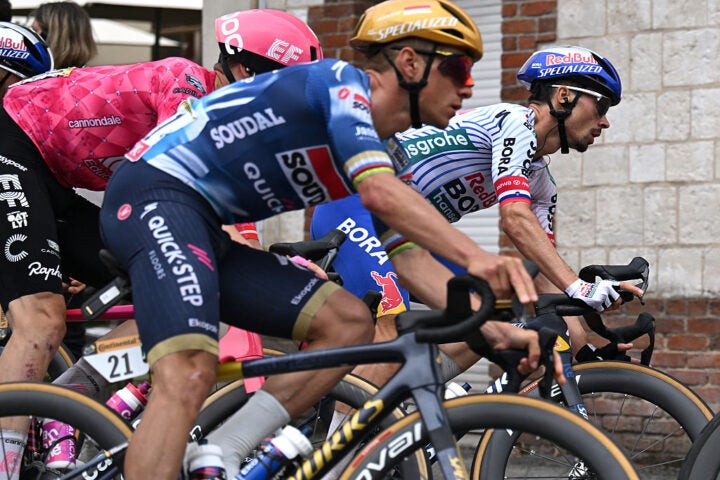
Last week, Marc Madiot, in an interview, stated that getting rid of bike computers and radios would make the peloton safer. In general, I agree with this.
If anybody has driven through the heart of a European city during peak traffic hours, with Waze on, a podcast playing at full blast, and an accompanying passenger asking questions, they will know how dangerous distraction can be.
Riders effectively do this every day at higher speeds with no seat belts or airbags. Bike computers now provide a range of information, and one only needs to watch a race to see how often we are looking down at this information while hurtling along some European road.
Directors are constantly speaking to us in our ears through the radio, stressing the importance of being in the right place at the right time. If you removed these distractions, I believe you would place far more emphasis on experience and create a much safer environment.
There are probably some points I am missing, some further arguments I could make, and even some flaws in the points I’ve outlined. However, one can only devote so much time and thought to a subject when they are also trying to get through the world’s most competitive bike race.
So, as I finish my coffee this morning, it’s time to open my race bible, review stage 4, and get my head back into this race!